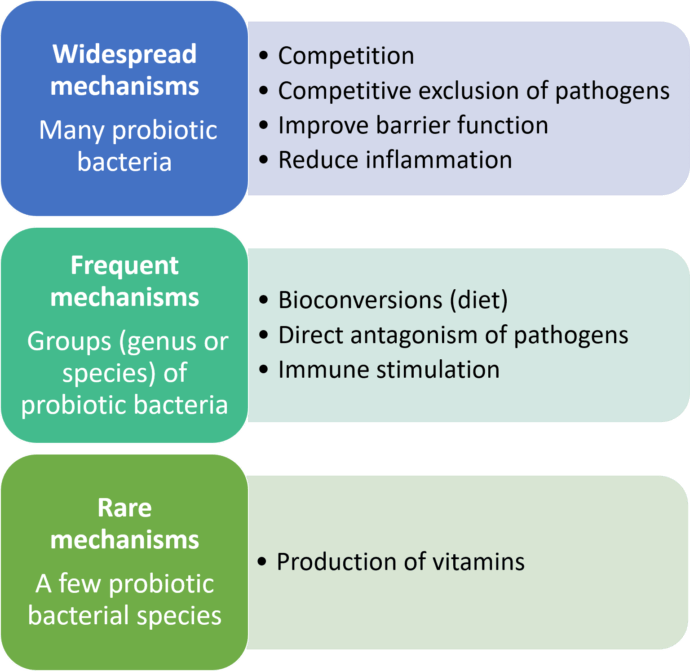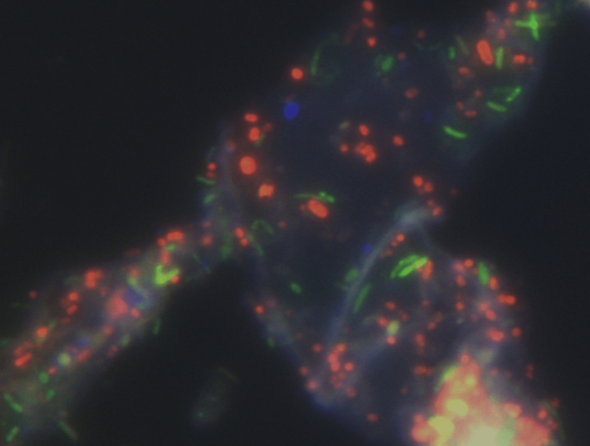Probiotics are live microorganisms which, when administered in adequate amounts confer a health benefit on the host. This means that probiotics are added live bacteria and we often consume them in dairy products, or in tablet form.
Health benefits can include improving digestion and absorption of nutrients, preventing growth of harmful bacteria, producing vitamins and helping your immune system to function properly. Sometimes they are used to treat specific conditions such as antibiotic-associated diarrhoea. Examples of probiotic bacteria are Bifidobacterium animalis and Lactobacillus acidophilus.

Many different bacterial species are used in different probiotic preparations, and we know that different bacteria have different activities. Therefore, if you want to use a probiotic bacterium to help prevent the progression of a specific disease it is important to use one that has been tested and shown to work for exactly that purpose. The type of bacterium in the probiotic yoghurt can matter.
If however the reason for taking the probiotic bacterium is quite general, for instance to help prevent an increase in populations of ‘bad’ bacteria after a course of antibiotics, then many different probiotic bacteria would be able to perform this widespread mechanism. These functions are also carried out by the bacteria that normally live in our gut, which is why most of the bacteria used as probiotics were originally isolated from gut samples.
A prebiotic is a substrate that is selectively utilised by host microorganisms conferring a health benefit. This means that prebiotics are FOOD for bacteria that are already present in the gut, and promote the growth of these bacteria. Prebiotics are naturally found in some vegetables such as onions, garlic, leeks, asparagus and Jerusalem artichokes.
Prebiotics can also be added to other foods including yogurts and breakfast cereal or are available as pills. The names of specific prebiotics such as galactooligosaccharides (GOS), fructooligosaccharides (FOS), oligofructose (OF), chicory and inulin can be spotted in the ingredient list of food products (in full or abbreviated).
Prebiotics are suggested as possible treatments for some diseases and work by increasing the numbers of specific types of bacteria in the large intestine, and thereby increasing concentrations of specific bacterial products that can benefit health. Prebiotics are found naturally in breast milk and are added to some formula milks to promote the establishment of the infant’s healthy gut microbiota.
Read also
Gut health
Gut microbial communities
Microbes in the human gut live close together in microbial communities, interacting with one another with both positive and negative effects.
